A Quick Look at the Kunpeng 920 Arm Server CPU
Here is a photo of the Kunpeng 920 powered Huawei TaiShan 2280. One can see that there are two CPUs under the heatsinks. Each CPU has 16 DIMM slots for 8 channel DDR4-2933 and 2 DIMM per channel operation (2DPC.)
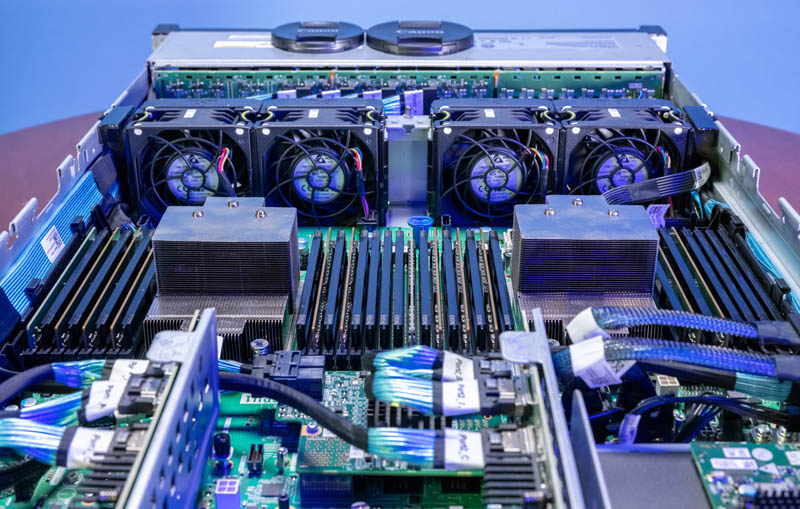
Removing the heatsink, we can see a quite large CPU. In this section, we wanted to show a lot more around the actual chips, and some size comparisons, so this is going to be heavier on pictures than words.
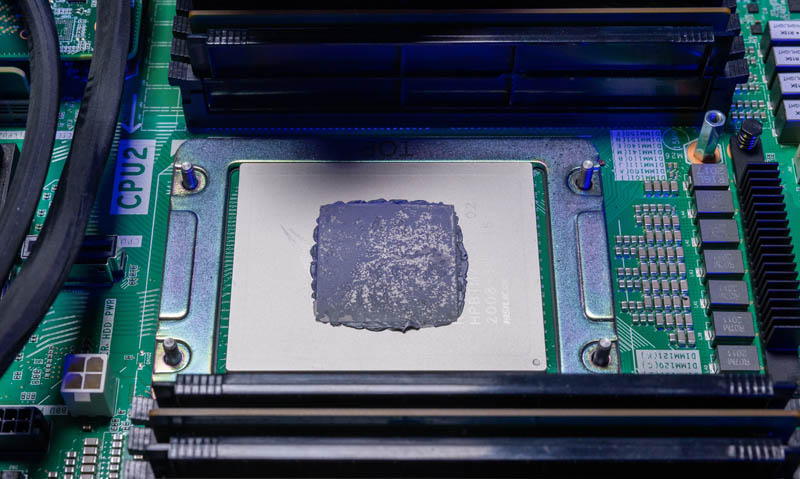
Here is another angle. We can see that the chip is a BGA package. This was expected given the SC18 placard. It means that CPU is affixed to the motherboard and so this is not a socketed server.
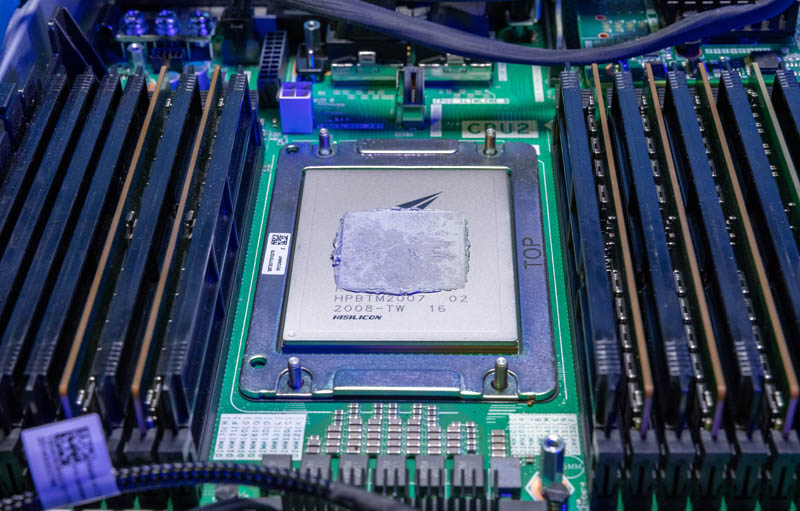
Instead of a socket, around the CPU there is a brace structure. This is to provide a rigid mounting point for the heatsink assembly, but it is not holding the CPU in place.
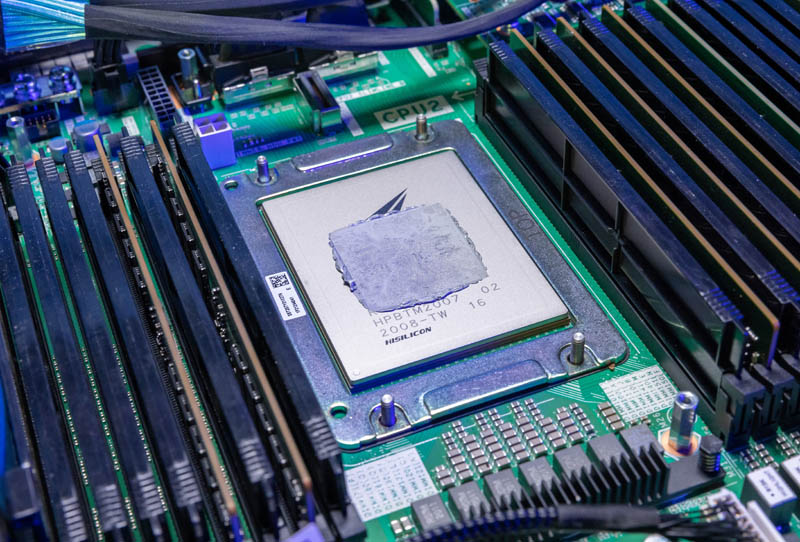
At this point, and deliberately, we have left the thermal paste in place. Taking a look at the heatsink, we can see a matching contact patch.
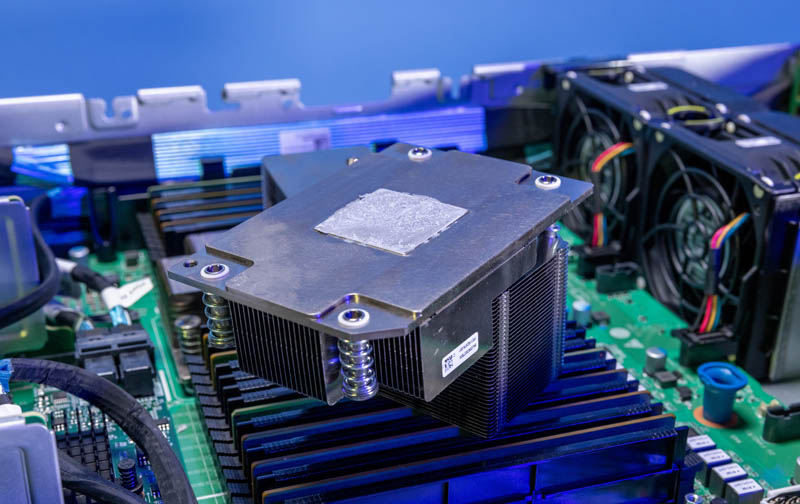
This smaller contact patch is raised. The entire heatsink is not designed to contact the CPU, just the middle section. This is different from what we see on AMD EPYC and Intel Xeon processors. For some frame of reference on the size of the contact patch, here is an Intel Xeon E5-2600 V4 chip next to the raised contact patch, both with thermal paste.
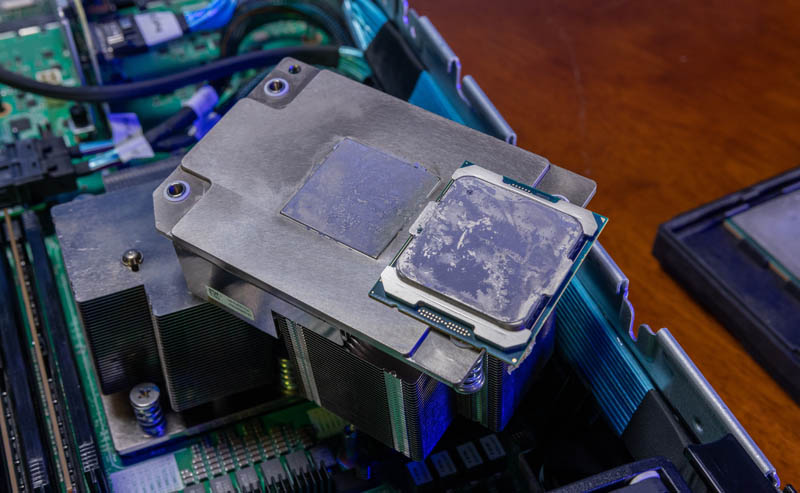
Here is the chip without the thermal paste, albeit with some residue. Apologies for that. The Kunpeng 920 has its HiSilicon marking and giant logo on it.
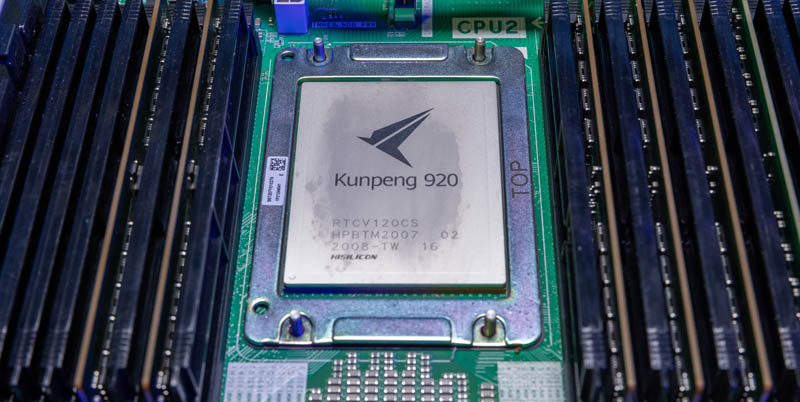
Getting to some size comparisons, here is a 3rd Generation Intel Xeon Scalable “Ice Lake” CPU next to the Kunpeng 920, both with their thermal paste applied.
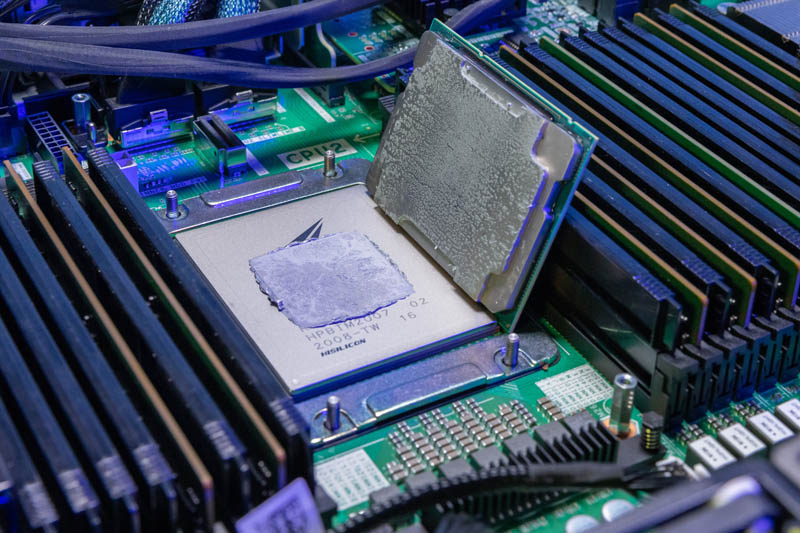
Here is an AMD EPYC 7003X processor next to the Kunpeng 920.
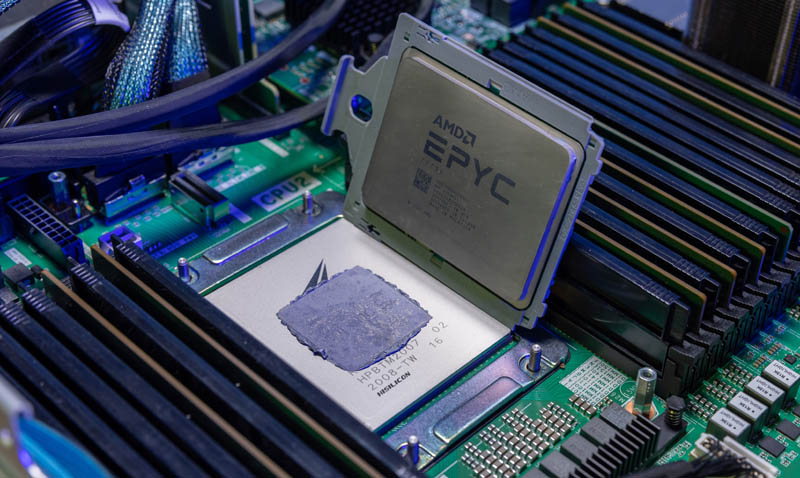
Here is another shot, but the EPYC is resting atop the DIMMs.
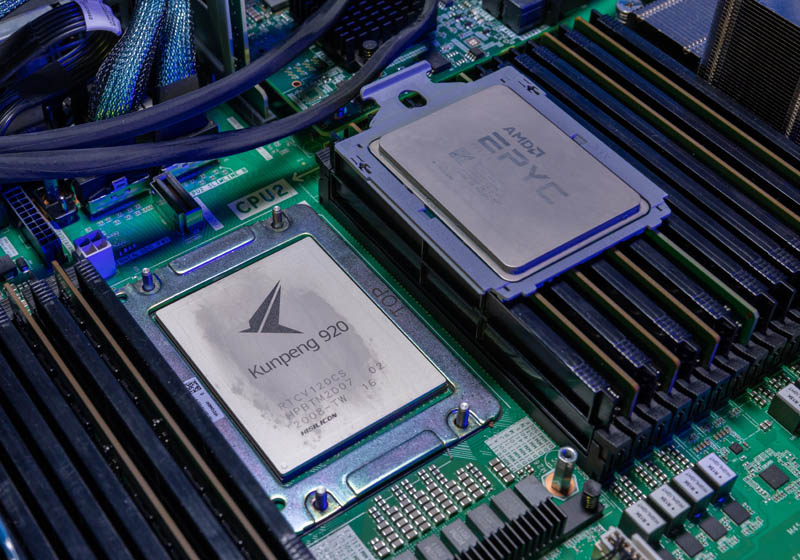
The Ampere Altra Max is much more similar in terms of scale. It is a large CPU package, just like the Kunpeng 920.
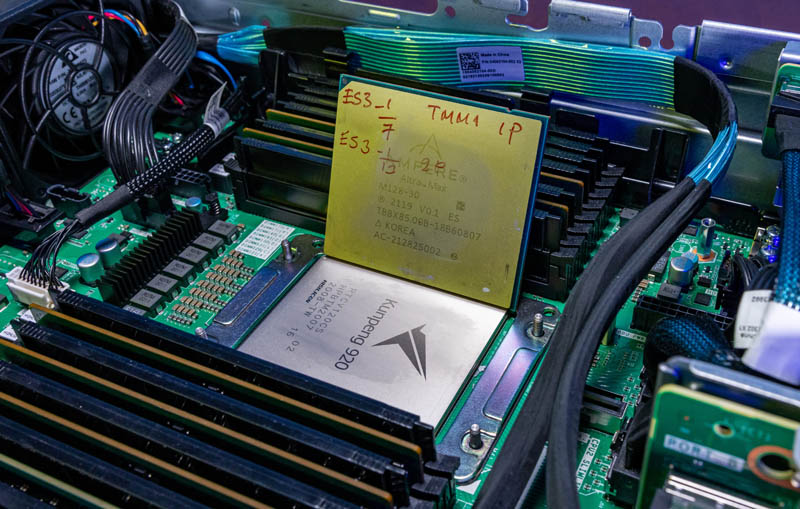
Some suggested that we photoshopped the yellow on that image. Actually, it was just lit like that. We had a blue light in the other direction but we used the yellow pictures more in our coverage.
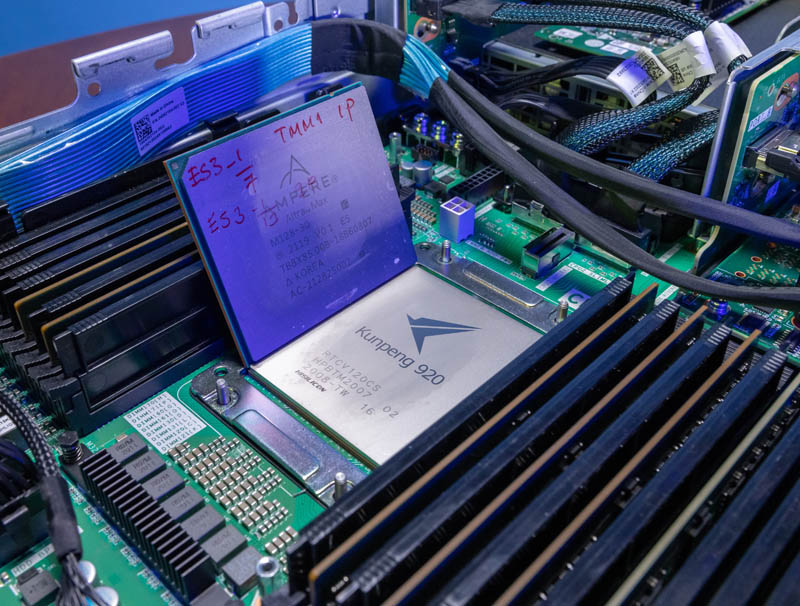
One can see that the Kunpeng 920 is maybe not as big as the Ampere Altra (Max) but it is noticeably bigger than the AMD EPYC 7003 (sans carrier) and the Intel Ice Lake Xeon.
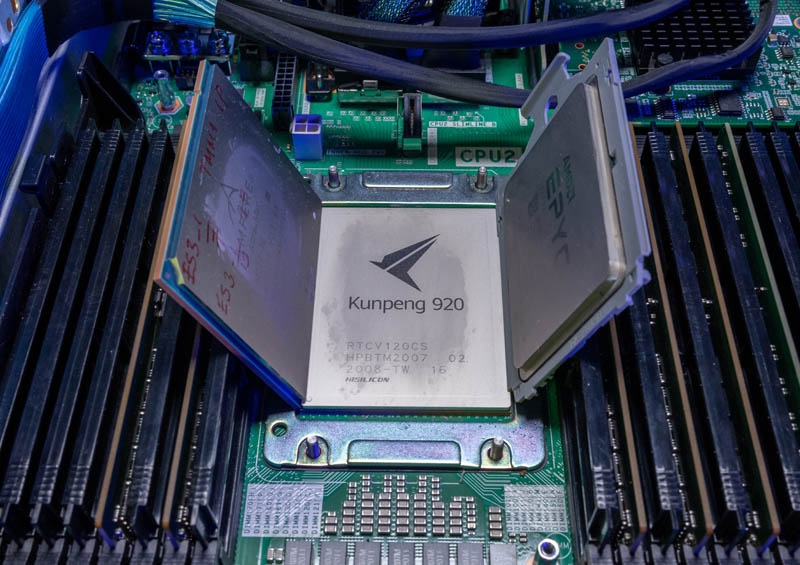
Of course, we were able to do this with the Ampere, AMD, and Intel chips because they are socketed while the Kunpeng 920 had to remain affixed to its motherboard because it is soldered.
Final Words
In 2019 when the Huawei HiSilicon Kunpeng 920 was first launched, it was a class-leading 7nm CPU. In Q3 2022, it is still a CPU being used in systems and clouds, but it is also showing its age. Not only has Ampere moved ahead, but AMD and Intel are also well beyond this generation of technology. Alibaba with the Arm-based Alibaba Cloud T-Head Yitian 710 has perhaps the fastest single-socket CPU, for integer workloads, not using accelerators, around. When we first saw this Kunpeng 920, it was a culmination of all kinds of new technology that made it really interesting. It just took us another 30 months to get them.
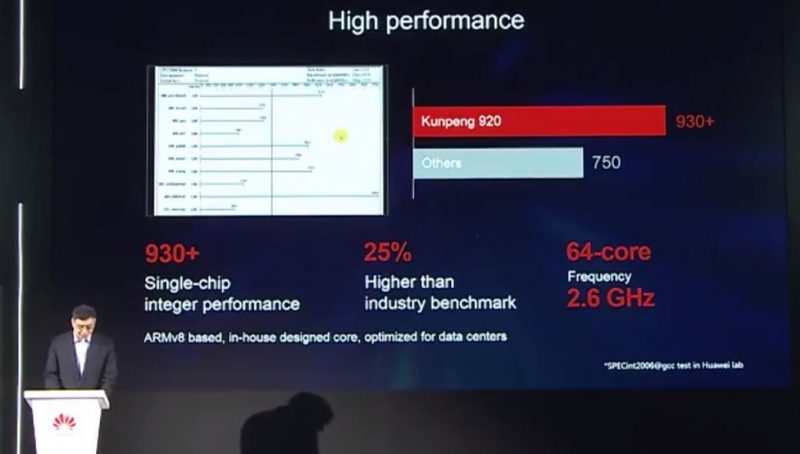
With the new CPU, we have been working to get it ready for prime-time, but it is challenging. The firmware seems to be better suited to Huawei workloads than a lot of what we are trying to run. We have started to get results, as we showed in our recent Solidigm D7-P5520 7.68TB PCIe Gen4 NVMe SSD review but getting to this level took about a day of work just playing with the system and its settings.
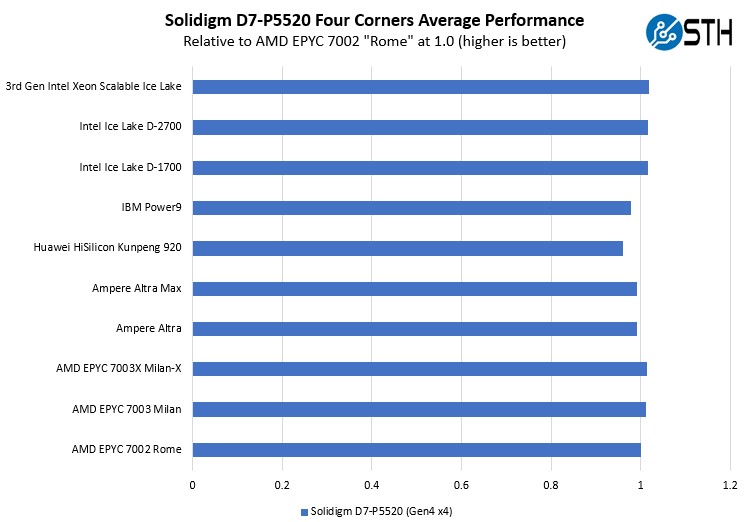
This is one project that we will continue to work on, but expect to see figures from this server pop into more pieces as we get more confident in the results. So far, we are tracking that these CPUs on integer workloads, and not using accelerators, should be around that of a contemporary Cascade Lake 24-core processor.
Hopefully, this was a great look into a CPU that rarely gets seen. Since it is seen so infrequently in the US, many make assumptions about the chip that do not match reality. We hope our TaiShan 2280 piece as well as this one help to shed light on technology that is often referenced but rarely seen in the US and Canada.




Phytium next?
Followed by a working Qualcomm Centriq would be fun too, for posterity.
Very interesting information. I look forward to reading more about these ‘different’ servers.
Thanks Patrick
Patrick please be aware that these Kunpengs are the mainstay for the latest Huawei storage offerings (v6 gen). Between 2019 and 2021 Huawei was able to transform it’s storage offerings from being x86 Intel based (v5 and earlier) to ARM based. For me it was a huge deal considering the need to not only develop stable hardware platform, but also the effort required to port the whole storage unit software stack. To the persons accustomed with how much legacy code is contained in the storage offerings from Dell or HPE this was a major shock.